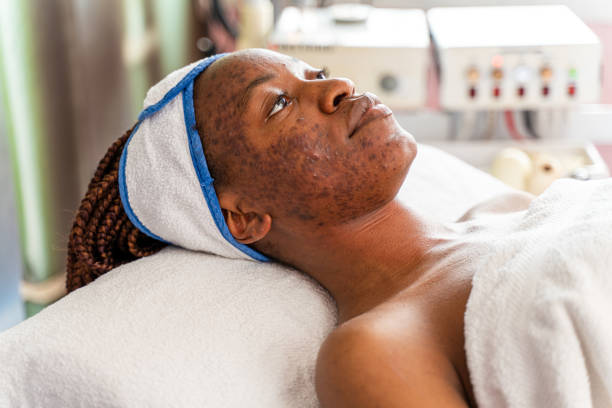Microneedling is a minimally invasive cosmetic procedure that involves the use of tiny, fine needles to create controlled micro-injuries in the skin. It is commonly used to improve the appearance of scars, fine lines, wrinkles, and skin texture. While microneedling itself is generally considered safe, there is a small risk of side effects, including temporary hyperpigmentation.
Temporary hyperpigmentation can occur after microneedling because the skin may respond to the procedure by producing more melanin, the pigment responsible for skin color. This increased melanin production can result in darkening of the skin in the treated area, which usually resolves on its own over time as the skin heals. This type of hyperpigmentation is typically not permanent.
However, permanent hyperpigmentation as a direct result of microneedling is rare. It is more likely to occur if the procedure is not performed correctly or if there is improper aftercare. Factors that can increase the risk of permanent hyperpigmentation include:
- Over-aggressive treatment: Using needles that are too long or applying excessive pressure during the procedure can damage the skin and lead to long-term pigmentation changes.
- Sun exposure: Exposing the treated area to sunlight without adequate sun protection can increase the risk of pigmentation changes, including permanent hyperpigmentation.
- Skin type: Individuals with darker skin tones (Fitzpatrick skin types IV-VI) are more prone to pigmentation issues, including hyperpigmentation, following skin procedures like microneedling.
To minimize the risk of permanent hyperpigmentation after microneedling, it’s important to follow proper pre- and post-procedure care instructions provided by your dermatologist or licensed practitioner. This may include avoiding sun exposure, using sunscreen, and applying recommended skincare products.
If you are concerned about the potential risks associated with microneedling, consult with a qualified and experienced practitioner who can assess your skin type and discuss your individual risk factors and treatment options. They can also provide guidance on how to minimize the risk of unwanted side effects.

Can microneedling cause permanent scarring?
- Practitioner skill and experience: The skill and experience of the person performing the microneedling procedure play a significant role in the risk of scarring. A well-trained and experienced practitioner is more likely to perform the procedure safely and minimize the risk of complications.
- Needle length and depth: The length and depth of the needles used during microneedling should be appropriate for the specific skin condition and area being treated. Using excessively long or deep needles can increase the risk of scarring.
- Skin type and condition: Individuals with certain skin conditions or skin types may be more prone to scarring. For example, individuals with a history of keloid or hypertrophic scarring may have an increased risk.
- Post-treatment care: Proper aftercare is essential to minimize the risk of complications. This includes keeping the treated area clean, avoiding exposure to harsh sunlight, using recommended skincare products, and following the practitioner’s post-procedure instructions.
- Infection: Infection can potentially lead to scarring. It’s crucial to maintain good hygiene before and after microneedling to prevent infection.
While permanent scarring is relatively rare with microneedling, it’s essential to discuss any concerns you have with your practitioner before the procedure. They can assess your skin type, condition, and medical history to determine if microneedling is an appropriate option for you and can provide guidance on minimizing risks.
If you notice any unusual or concerning changes in your skin after microneedling, such as persistent redness, excessive swelling, or signs of infection, it’s important to contact your practitioner promptly for evaluation and treatment. Early intervention can help prevent complications from becoming more severe or permanent.
